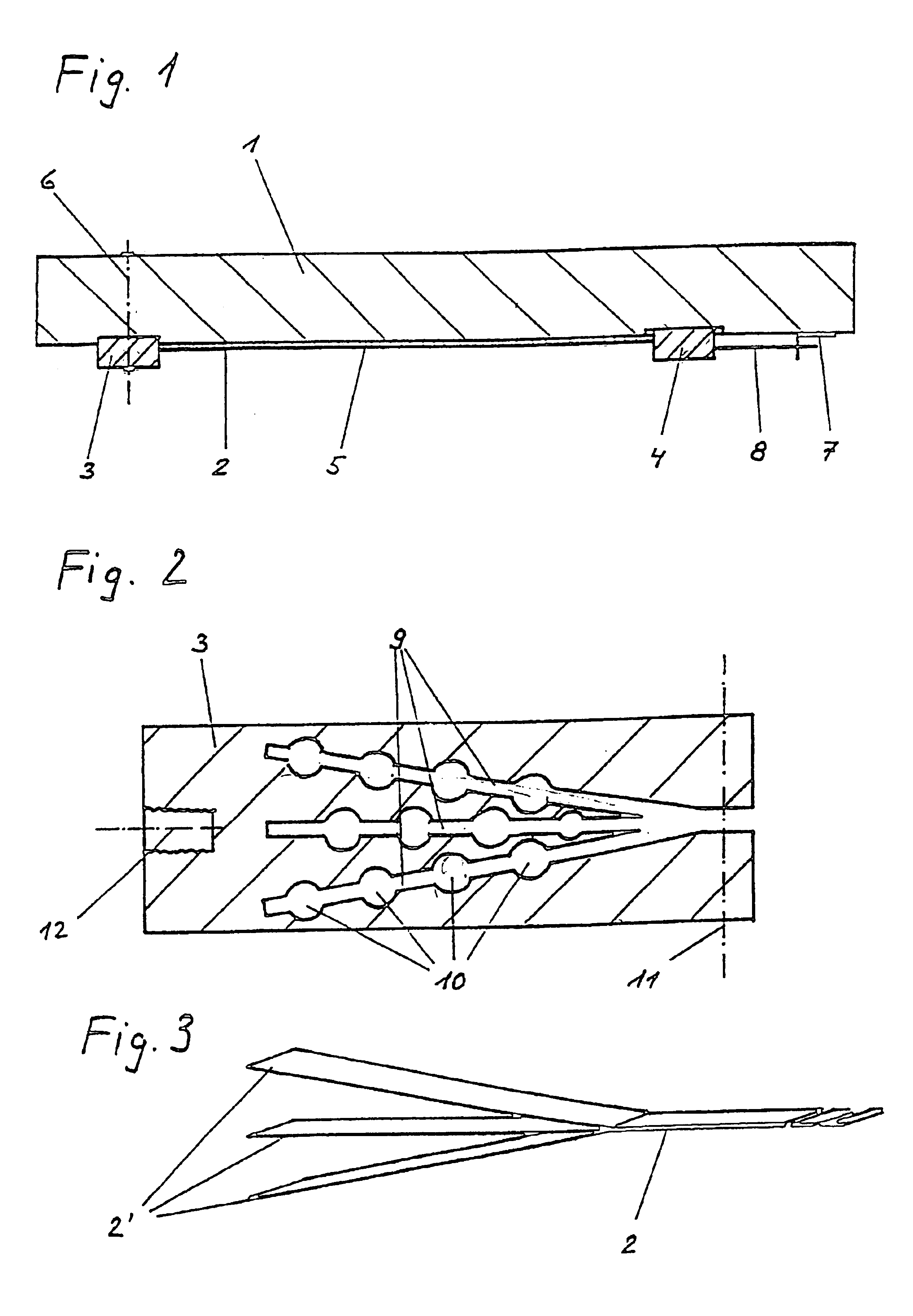Reinforcement device for supporting structures
- Summary
- Abstract
- Description
- Claims
- Application Information
AI Technical Summary
Benefits of technology
Problems solved by technology
Method used
Image
Examples
Embodiment Construction
FIG. 1 shows a cross section through a beam 1 to be reinforced. The ends of the CFK panel 2 used for this purpose are inserted according to the invention in elements, in this case anchor heads 3 and 4. Anchor heads 3 and 4 can be inserted into milled or pointed recesses of beam 1 as shown in this figure. CFK panel 2 is connected with beam 1 over part or all of the area by a layer of adhesive 5 and the anchor heads 3 and 4 are glued to it as well. In addition, anchor heads 3 and 4 can be connected with the beam by a transverse clamping device 6, shown here simply schematically, resulting in an improved direction of the force through the anchor heads 3 and 4 from the CFK panel 2 into the beam 1. This transverse clamping device 6 can be for example, a threaded rod or dowel guided through the beam 1 and the anchor heads 3 and 4.
The reinforcing device composed of the CFK panel 2 and the anchor heads 3 and 4 can also be simply pretensioned as shown schematically on the right-hand side of ...
PUM
| Property | Measurement | Unit |
|---|---|---|
| Thickness | aaaaa | aaaaa |
| Angle | aaaaa | aaaaa |
| Width | aaaaa | aaaaa |
Abstract
Description
Claims
Application Information
 Login to View More
Login to View More - R&D
- Intellectual Property
- Life Sciences
- Materials
- Tech Scout
- Unparalleled Data Quality
- Higher Quality Content
- 60% Fewer Hallucinations
Browse by: Latest US Patents, China's latest patents, Technical Efficacy Thesaurus, Application Domain, Technology Topic, Popular Technical Reports.
© 2025 PatSnap. All rights reserved.Legal|Privacy policy|Modern Slavery Act Transparency Statement|Sitemap|About US| Contact US: help@patsnap.com



